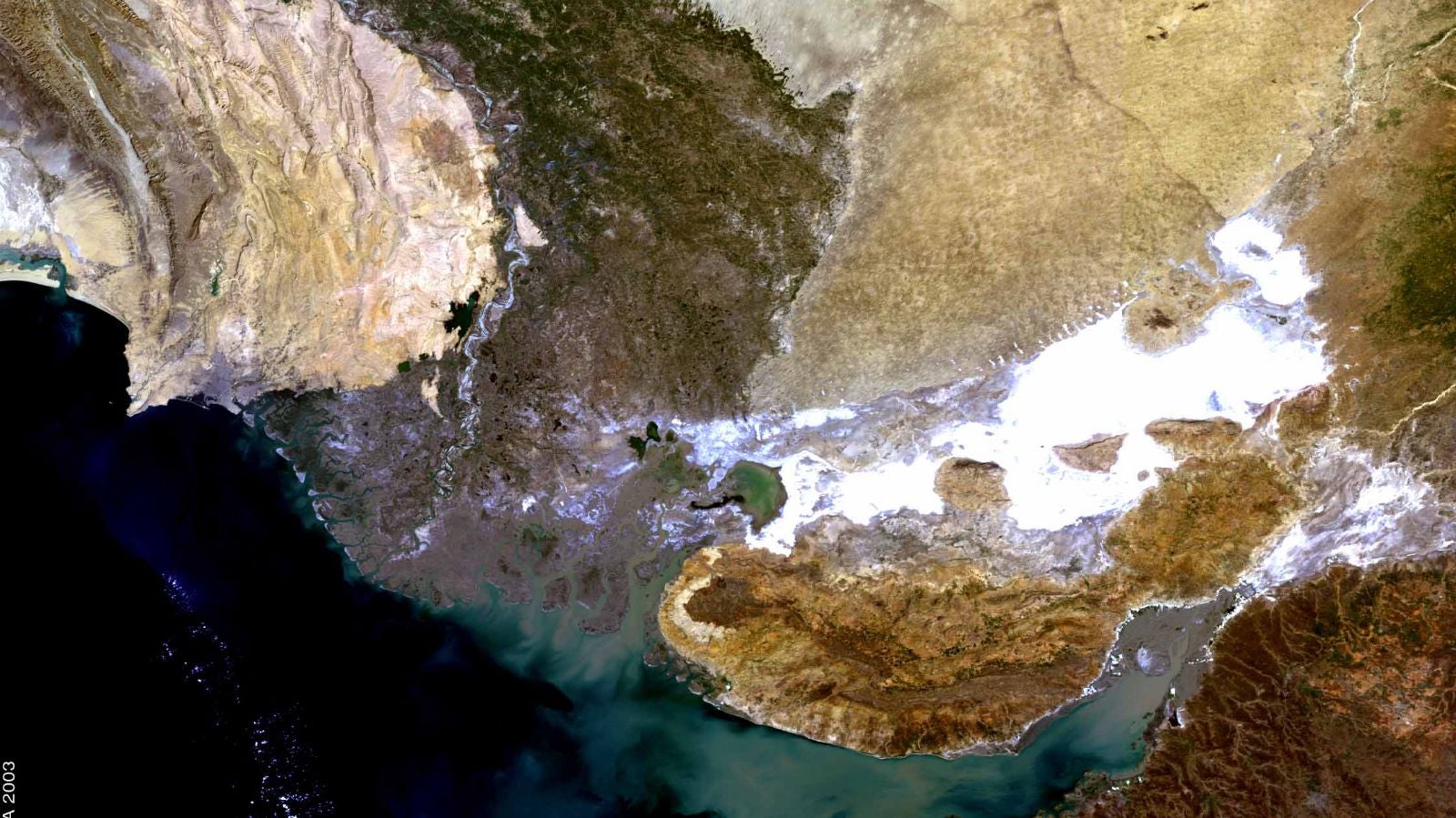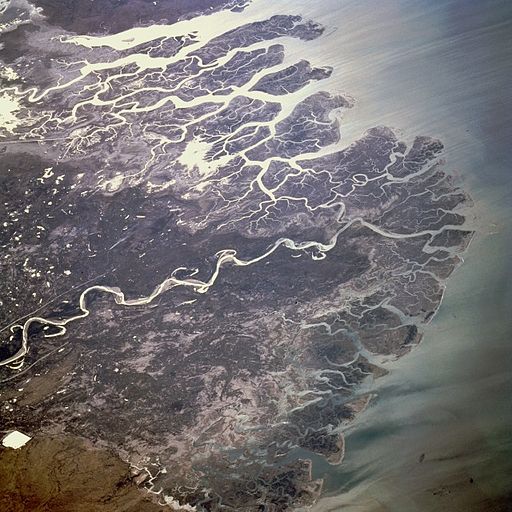The slow and dangerous death of Pakistan’s Indus river delta
Climate change and bad policies are wreaking havoc over Pakistan’s Indus river delta.


Climate change and bad policies are wreaking havoc over Pakistan’s Indus river delta.
The over 3,000-km-long Indus river is a lifeline for countless farming and fishing communities in Pakistan, beginning in the Himalayas and flowing down to the Arabian Sea, where it forms a 600,000 hectare delta.
But this delta is now dying a slow death as the construction of dams for irrigation and power has choked off much of the fresh water supply. The result: its 17 major creeks are drying out and salty water from the sea is steadily entering the basin.
The delta stretches 150 km along the Arabian sea, forming a key part of Pakistan’s coastline. It is mostly located in the Badin and Thatta districts in the Sindh province, and is home to 97% of the country’s mangrove forests.
But the drying creeks and rising salinity are setting these forests up for a major ecological disaster. The dwindling river flow had already led to the loss of about 86% of mangrove cover between 1966 and 2003, according to data from the Coastal Environmental Management Plan for Pakistan.
These forests form the backbone of the area’s delicate ecosystem, providing a breeding ground and food for various species of fish and shrimps that are a key part of Pakistan’s fisheries exports. Over the years, the rising salinity and disappearing forests have drastically reduced the amount of fish and shrimp stocks available.
Over 1.2 million people were estimated to be living around the Indus river’s mangrove forests in 2002, and many of them continue to depend entirely on fishing or farming for their livelihood. But with fishing catches on a downward spiral and the increasing salinity of the land making farming nearly impossible, the delta’s communities face a huge crisis.
Dying dolphins

Another species at risk is the Indus river dolphin whose habitat has been steadily declining since the 1930s when the construction of dams first began. With each new dam, small groups of dolphins became trapped in parts of the river, unable to swim upstream or downstream. Many were left to die, resulting in an over 50% decline in the total population from 1944. According to estimates from the World Wildlife Fund, only 1,100 remain today.
But for the Pakistani government, building more dams seems to be the only way forward.
The country is in the midst of a worsening water crisis, the result of the combination of a growing population, climate change and poor governance. Last year, researchers estimated the country had just 30 days worth of stored water, making it one among the 36 most water-stressed countries in the world.
In response, the country’s prime minister Nawaz Sharif last year approved the construction of two massive dams on the Indus river: the 4,500-megawatt Diamer-Bhasha Dam in the Gilgit-Baltistan area in the north and the 2,160 megawatt Dasu Hydropower Project in the Khyber Pakhtunkhwa province in the northwest.
But for the communities who live on the land around the river and the delta, these massive dams will make things worse.
“It is obvious that the (Diamer-Bhasha) dam will sink everything—from our properties to our social and cultural values. We have given up all of these for the sake of this dam,” Attaullah Khan, the head of the ‘Affectees Committee of Diamer-Basha Dam’, told The Third Pole, an NGO focused on Asia’s water crisis, in January.